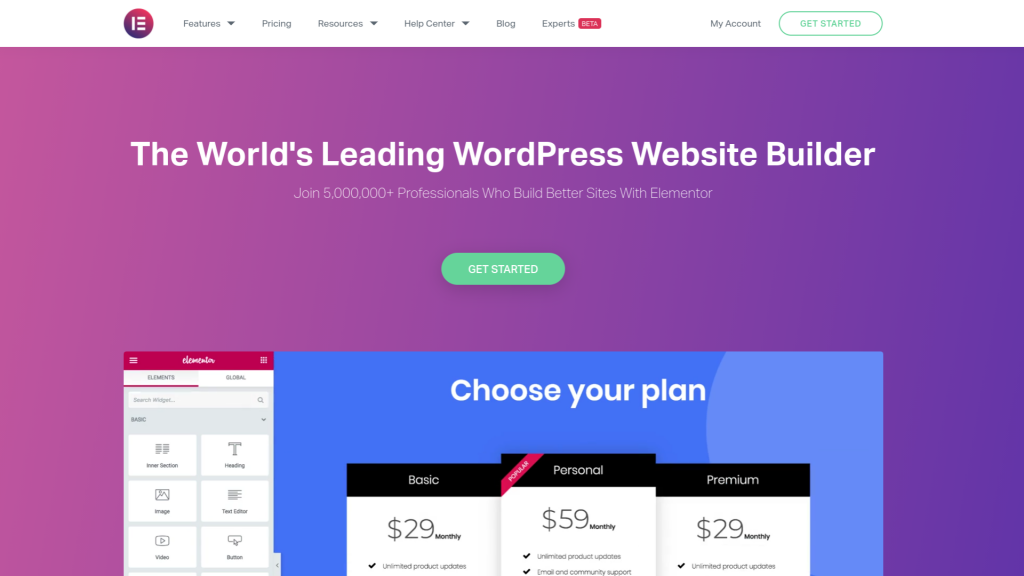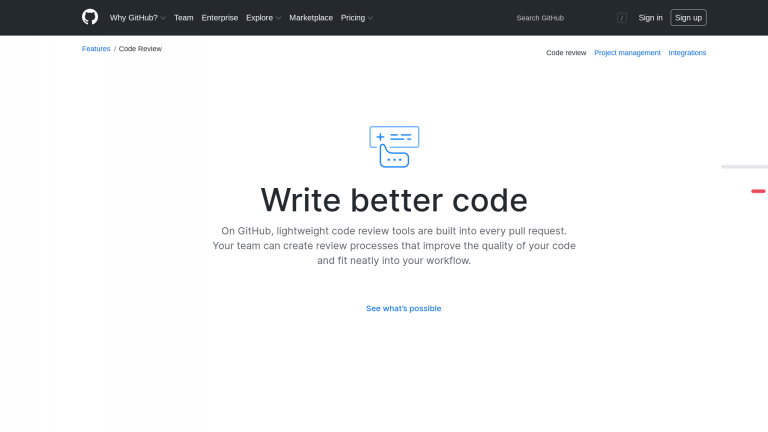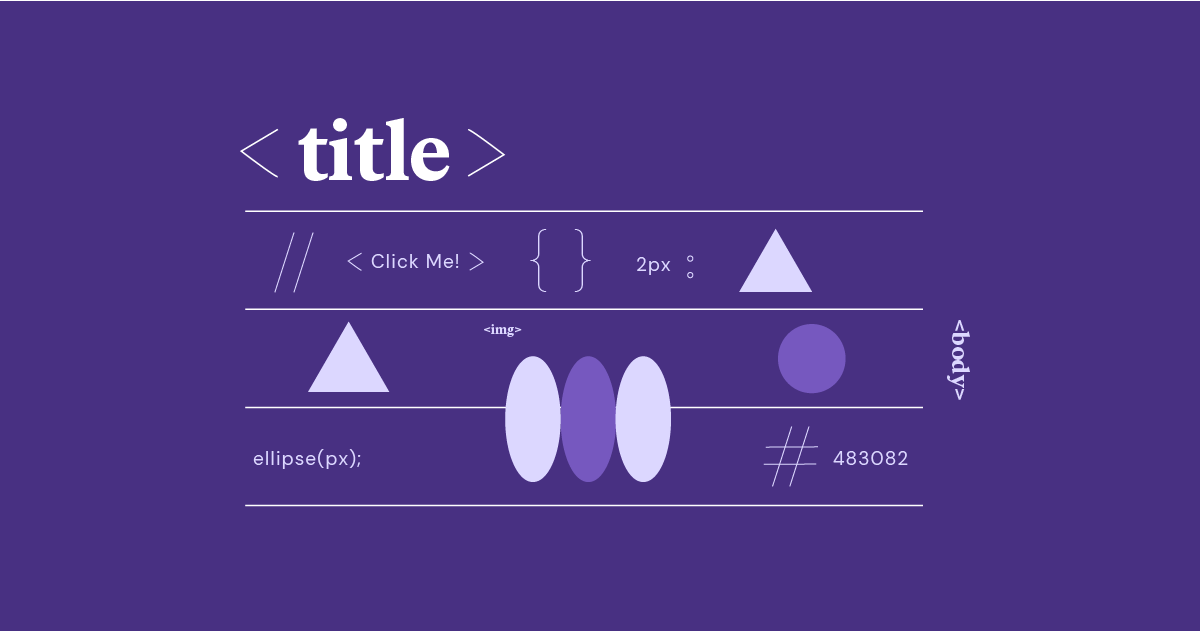A web designer is a graphic artist who is responsible for designing the layout, usability, and visual appearance of a website. A web developer is someone who builds and maintains the core structure of a website.
A successful web designer must possess an array of creative, graphic, and technical skills.
A web developer is s tasked with converting the web design into a functional website, using coding languages such as HTML, JavaScript, PHP, and Python.
If you’re considering a career as a web designer or developer, you’ll need a deep understanding of the different roles, as well as the required qualifications and skillsets. You should also consider factors such as the average wage, career growth opportunities, and the different types of web designers and developers.
In this guide, we’ll break down the role of a web designer vs. a web developer, and we’ll also discuss how you might go about choosing between the two paths. Let’s get started!
Table of Contents
The Role of a Web Designer
Web designers have a varied set of tasks and responsibilities. However, a designer’s role revolves around creating the layout and visual aspects of a website.
Their goal is often to make sure the site is both visually pleasing and user friendly and encourages visitors to stay around for as long as possible. In addition to the general framework and layout structure, this also means considering and constructing conversion-generating elements, as well as designing web pages in a way that translates well across various devices.
Web designers need to stay updated on the latest web design trends and adhere to certain standards and best practices. They often deal with brand imagery, color palettes, fonts, and so on. Many will even create a web design style guide to ensure that each website looks consistent:

There are a handful of other key documents and resources that designers are charged with creating, administering, and overseeing. This includes:
There’s also a fair amount of research and testing involved in a web designer’s job. It’s important to make sure the website is designed in a way that meets users’ expectations and client specifications.
Additionally, a web designer will need to consider how their design affects the coding of the website. Designers create a site structure and mockup, which developers then bring to life by coding the site.
Web designers’ work typically also includes some post-launch services. They may provide content creation and updates, maintenance and monitoring services, and ongoing performance checks.
Types of Web Designers
There are different types of web designers, each focusing on a unique and specific type of work. These are:
- User Experience (UX)
- User Interface (UI)
- Visual
In order to decide which web design niche is right for you, let’s delve deeper into these roles.
UX Designers
UX designers help ensure the website is structured in a way that engages visitors and delivers a positive experience. Their role is to create human-centric designs that are based on data-driven decisions. This involves conducting a lot of research and testing to gather and analyze data, which is used to inform their final design choices.
UI Designers
UI designers also play an important role in the design of a website. In addition to the experience it provides, they also prioritize interactions. More specifically, their role is to enhance the usability of a website and optimize it in a way that helps encourage conversions.
Visual Designers
Visual designers, as the title suggests, work with the layout and visual elements of a website. This work combines certain aspects of both UX and UI design. The duties of a visual designer are based on ensuring that the interface is both aesthetically pleasing and easy to use.
Most web designers use a handful of tools, software, and programs to perform their tasks. The most important of these are design and editing software and programs, such as Adobe Photoshop, for example.
They may also use stock photography resources, as well as image optimization and compression tools. Additionally, web designers often use a CMS such as WordPress, and a website builder platform like Elementor:

Wireframe and prototype tools are also helpful. They let web designers lay out and visualize the site’s framework, and then create mockups and models to test throughout the development process.
The Skill Sets Web Designers Need
The skill sets web designers require to be successful vary, depending on each person’s specific role and specialty. However, generally speaking, some important skills include:
- HTML and CSS knowledge
- Understanding the Principles of website design and web accessibility standards
- Responsive and interaction design
- Conversion Rate Optimization (CRO)
- User journey mapping
- Wireframing and prototyping
- Branding, color theory, and typography
- Design tools and software
There are also a number of non-technical skills that are important for web designers to have. For example, strong communication skills are necessary for properly communicating with clients to set and manage expectations. Additionally, having the ability to collaborate with others on a team, such as web developers, is important for ensuring that each project goes as smoothly as possible.
The Role of a Web Developer
A web developer’s primary job is to build and maintain the core structure of a website. Their role involves a lot of technical work, including using complex coding and advanced programming languages. In a nutshell, they take the ideas and concepts laid out by designers and turn them into real, live, and fully-functioning websites.
More specifically, the duties of a web developer involve constructing the website itself. This includes coding and configuring the server and databases on the back end, as well as incorporating user-facing features and functionality. They also perform testing and debugging and may handle an array of post-launch services, such as providing ongoing support and maintenance and fixing server or hosting issues.
To better understand the role of a web developer, it might help to compare it to another field, such as construction. A web developer is to a website what a construction company is to a new house. The developer takes the design plans and blueprints drafted by the architect (web designer) and lays the foundation to ensure that there is a functional, sound structure in place.
Types of Web Developers
Typically, web developers focus on a handful of programming languages. The languages they use, however, will depend on the type of web development work they do.
There are three major kinds of web developers:
- Front-end
- Back-end
- Full-stack
Front-End Web Developers
Front-end developers code the actual website using CSS, HTML, JavaScript, and other languages, as well as Content Management Systems (CMS) such as WordPress. Front-end development, also known as client-side development, largely involves coding and programming the visual elements of a website that users will see. As such, there is a fair amount of overlap and collaboration between front-end developers and web designers.
Back-End Web Developers
Back-end developers code the database and server using advanced programming languages such as PHP, C#, Java, Ruby, and SQL, as well as NodeJS and other server-side frameworks. Back-end development, also known as server-side development, mainly encompasses the aspects of the website happening ‘behind the scenes’, which visitors don’t see from the front end.
Full-Stack Web Developers
Finally, full-stack developers code both the front and back end of a website. They have a solid understanding of how these parts work and function together. In addition to coding web pages using CSS, HTML, and JavaScript, full-stack developers also set up and configure servers, code Application Programming Interfaces (APIs), query databases, and more.
The Skill Sets Web Developers Need
As we touched on above, web developers require certain technical skill sets to fulfill their roles. At the least, a web developer will need to be knowledgeable in:
- Coding and programming languages such as HTML, CSS, JavaScript, and PHP
- JavaScript frameworks like jQuery
- Testing and debugging
- Back-ends and databases
- Content Management Systems (WordPress, etc.)
- Search Engine Optimization (SEO)
In addition to technical skills, there are also non-technical skill sets that come in handy as a web developer. This includes problem-solving and analytical thinking, which can be useful during the debugging process. It’s also important to have solid communication and collaboration skills for working with clients and other key parties (such as web designers).
To perform their job, there are also a handful of tools and platforms that web developers use. This includes Jira for issue tracking and GitHub for code versioning:

In addition, for testing and debugging, developers often leverage solutions such as Chrome DevTools. It’s also crucial to be familiar with using hosting control panels and File Transfer Protocol (FTP) clients like FileZilla.
Web Designer vs Web Developer: What’s the Difference?
Hopefully, you now have a better understanding of the key differences between a web designer vs. a web developer. To bring everything together, let’s take a look at a quick breakdown of the biggest distinctions between these two roles:
- While designers focus on appearance and usability, developers focus on functionality and structure.
- Web designers conceptualize the idea and look of a website, creating a mockup based on visual, UX, and UI elements. Web developers determine whether the concept is financially and technically plausible, and if so, program and code the site.
- Web developers require a solid amount of technical knowledge. This includes understanding complex programming languages and frameworks. While there is some research and analysis involved, a web designer’s role is less technical and more about the visual and creative elements of a website.
- There are different types of web developers, including front-end, back-end, and full-stack developers. The three main types of web designers are UX, UI, and visual designers.
- The tools and programs web developers often use include coding libraries and frameworks, code versioning and issue tracking platforms such as GitHub and Jira, hosting control panels and FTP clients, and CMSs. Web designers typically use design editing software such as Photoshop, a CMS like WordPress, and a website builder such as Elementor, along with wireframing and prototyping tools.
Both web designers and web developers play a critical role in building, constructing, and maintaining websites. Ultimately, the two roles depend on each other to deliver a quality product.
The main difference is that developers focus on the technical aspects of the project, such as programming and coding. Designers handle the visual and conceptual work that is necessary for ensuring a solid UX and UI.
Tips for Choosing the Right Career Path for You
With so many businesses moving online, now is an ideal time to pursue a career building websites. However, the first step is figuring out whether you want to work as a web designer vs. a web developer.
To help you determine which career path you would be better suited for, ask yourself which aspects of website creation you are most drawn to. For example, do you prefer visual design or are you intrigued by the idea of coding a website? If it’s the latter, a role as a web developer will probably be more fulfilling.
We also recommend exploring the career progression opportunities, industry demand, and potential for growth each role offers. A quick internet search will show you that there are plenty of places to find web design work, as well as web development jobs on both the freelance and agency levels.
Of course, it’s also important to consider the financial aspect. The average web developer and web designer salaries vary based on a handful of factors, including your skills and experience level, location, and area of specialty. Naturally, the more experienced and sophisticated skills you acquire, the more you’ll be able to charge clients.
Another way to decide between a career as a web developer versus a web designer is to think about the skills and attributes required by each position, which we outlined earlier. Compare those to the skills you currently have or would be interested in learning. Keep in mind that lacking knowledge in one area isn’t necessarily a reason to rule it out as a potential career.
If you’re just starting out, there are plenty of resources you can use to improve and expand your skillset. For example, there are web design books, web design online courses, and development resources available that will help you sharpen your skills and advance your career.
It might help to dive into some of these resources now, to get a better idea of what the work of a web developer or designer will entail. Then you can begin to pursue the opportunities that are most rewarding to you, both personally and financially. Who knows — maybe one day you will even be ready to start a web design business of your own!
Getting Started as a Web Designer or Web Developer
While they may sound similar, web designers and web developers have very different roles and distinct responsibilities. Designers focus on the front-end and visual aspects of a site, which influences its usability and overall UX. Developers, on the other hand, are responsible for taking the concepts and ideas laid out by designers and coding them into fully-functioning websites.
When considering whether you’d like to become a web designer vs. a web developer, keep in mind the different specializations and required skill sets involved. If you’re drawn to the pragmatic, technical side of projects, a web developer is a sensible career option. However, if you’re more interested in color theory, branding, and the creative element of building websites, a web designer is likely a more practical career choice.
Do you have questions about how to dip your toes into the world of web design and development? Ask us in the comments section below!
Looking for fresh content?
By entering your email, you agree to receive Elementor emails, including marketing emails,
and agree to our Terms & Conditions and Privacy Policy.


